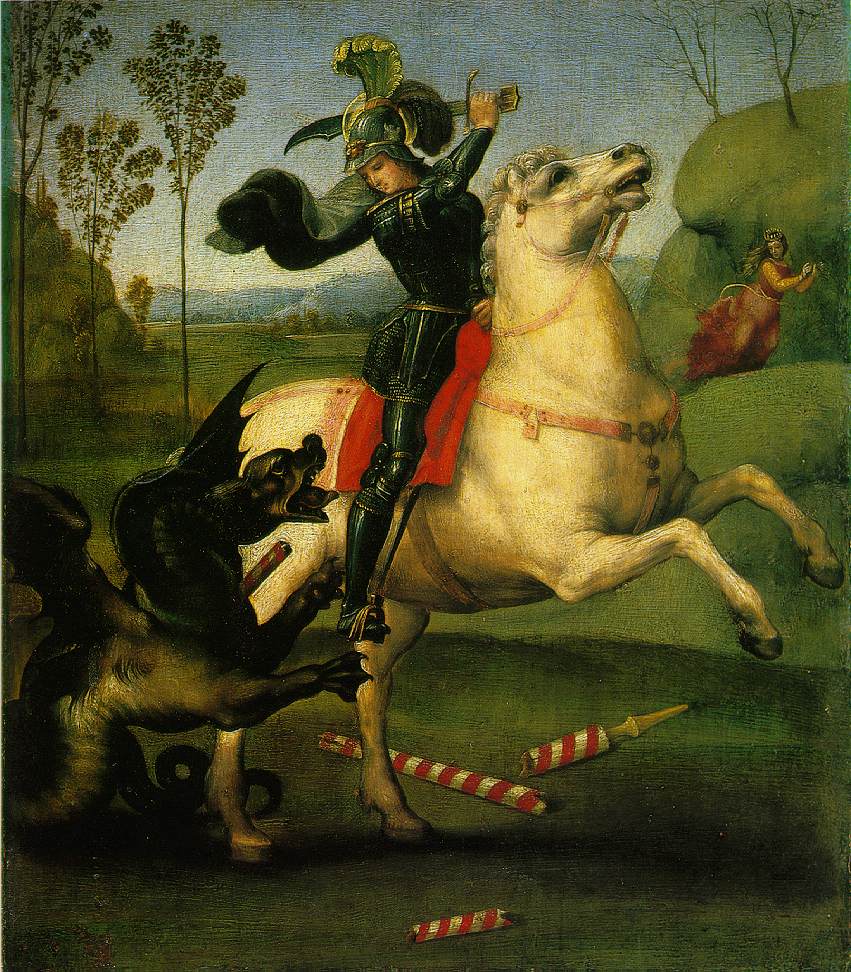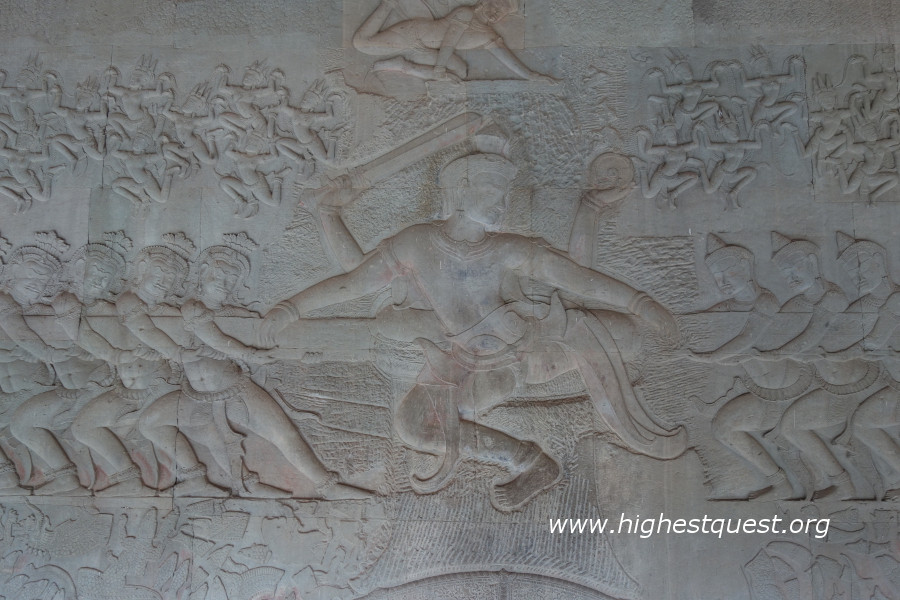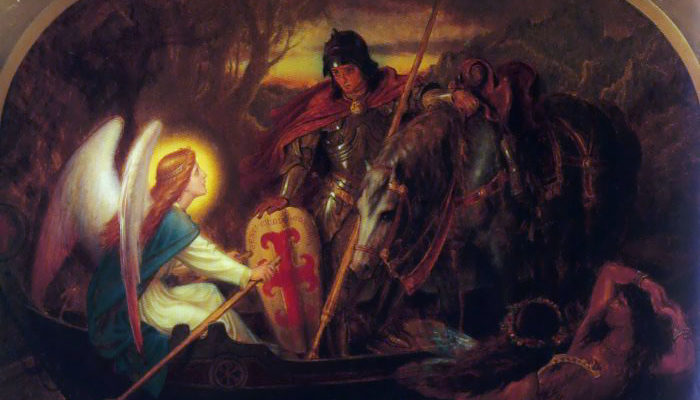Mythological Symbolism of the Great Work: The Hero’s Journey Towards the Source
Throughout the world the great inner struggle, or the Great War that takes place inside a person that aspires to reunite with their Being/Higher Self has been depicted in many different forms, throughout ages and continents. In more recent times, when our world has plunged into the jaws of materialism, this Great War has been interpreted as something external, as if we are to defeat an enemy, or a group of enemies that are outside of us, belonging to this or that community or race. But this tremendous struggle, that is such a big part of human mythology, is in reality the one that is taking place within, and is showing us what is needed in order to succeed in this Great Path that is leading towards the Self-realization of our Being.
The Hero’s Journey
A researcher Joseph Campbell in his long study of analyzing different mythological elements (and which he wrote about in his book “The Hero With A Thousand Faces”) has synthesized that most of these great stories of the world have very similar pattern, that can be deducted to the following elements (my comments are next to each of these main elements):
- Awakening (on the path to liberation, the person first has to awake to reality of their life, which makes them question their place in the world, as well as other important questions of life)
- Call to adventure (the person, while still in the process of adjusting to their awakening, is called by his Higher Self to undertake the journey that will lead him to complete awakening)
- Refusal to the call (the person feels uncertain about leaving the commodities of their daily life in order to step outside of the comfort zone and undertake the Great Work, which as it has been put, is “a life lived intensely with rectitude and with love“. It is something completely different to what he has been accustomed to thus far, and so he feels resistance and fear)
- Accepting the call (eventually the person starts the Great Work, knowing that his small awakening brought him understandings that have already changed his life to some degree. He wants to learn and know more.)
- Supernatural aid (the person finds himself advancing on the Probationary path, asisted greatly by divine help without which movement forward would not be possible)
- Crossing of the threshhold (the person crosses the treshold of the path. He starts to experience profound things and starts going through difficulties)
- Entering the belly of the whale. (the person, now a hero, is in advanced stages of the Esoteric Path, which entail high esoteric initiations that need to be achieved, and that means going through suffering, though he is aware that the rewards that await on the other side of these Initiations are worth fighting for)
- Rewards and the Journey Home (at the end of the path to Liberation, the hero is to merge fully with his Being, and as such can choose to return to the point of origin – the Source)
The Knight and the Dragon
 Perhaps one of the most well known of symbolical depictions in the Western mythology has been the fight between Saint George and the Dragon. Mythology speaks about St. George as the 3rd century Christian saint from Cappadocia, who struggles against a dragon (another version shows a knight instead of St. George). In the esoteric studies it is taught that there are two great Dragons: the Dragon of Darkness and the Dragon of Wisdom. The former represents the sum total of our defects – our subconscious drives; the program of nature that controls us. And the latter, the Dragon of Wisdom, is our own inner Being; our guiding light by which we are here in this world.
Perhaps one of the most well known of symbolical depictions in the Western mythology has been the fight between Saint George and the Dragon. Mythology speaks about St. George as the 3rd century Christian saint from Cappadocia, who struggles against a dragon (another version shows a knight instead of St. George). In the esoteric studies it is taught that there are two great Dragons: the Dragon of Darkness and the Dragon of Wisdom. The former represents the sum total of our defects – our subconscious drives; the program of nature that controls us. And the latter, the Dragon of Wisdom, is our own inner Being; our guiding light by which we are here in this world.
In order to arrive to our Being, it is necessary to come out victorious from this great fight against the Dragon of Darkness. In mythology, the knight (or St. George) is shown fighting the dragon, behind whom stands imprisoned damsel, and behind her is a castle. The knight has to kill the dragon so that he may release and reunite with his damsel, and get access to the castle in which is hidden the treasure of the dragon. Many knights have attempted this task, but have failed. All except one, who was rich with virtues, and whose aspirations were high.
Speaking of symbolism, the knight represents the consciousness; who we are (the spark of our Being). The dragon is the sum total of our defects (the subconscious mind). The damsel is our conditioned consciousness or virginal part of ourselves that is entrapped inside the many defects of our subconscious mind. And the treasures inside the castle is our Being; it is what we attain if we manage to overcome our lower passions and perfect ourselves. And so the goal of the knight is to transform the subconscious mind (the dragon) into consciousness (the damsel), in order to attain access to the treasures of the Being.
The Story of Perseus
The medieval story of the knight and the dragon has its roots in much older one that goes back to ancient Hellenistic culture and their story of Perseus and Andromeda. The hero in this case was the son of Zeus (the Father of gods), while Andromeda was a beautiful maiden entrapped by a sea monster Cetus (the unleashed waters of sexual passions). But before dealing with this monster, the hero had to kill the mighty Medusa, who instead of hair had snakes on her head (also symbol of lustful energy), and who turned men to stone when they watched her eyes (anyone who identifies with lustful sensations is “turned to stone”, or unable to fight against it).
Once the Perseus defeated Medusa, he gained tremendous amount of strength and went on to rescue Andromeda from the sea monster Cetus. By killing his enemy, Perseus has uprooted lust in a complete manner, and by so doing he eliminated all of his defects (because lust is at the root of all egos/defects).
Churning of the Milky Ocean

Central part of the carving from Angkor Wat depicting the churning of the Milky Ocean, showing gods and demons pulling the cosmic serpent, and god Vishnu (representing the force of Creation) in the middle overseeing this churning.
In Hindu mythology, a story of the Churning of the Milky Ocean is described depicting another great struggle between light and darkness. This ancient Vedic story speaks about the struggle of the asuras (demons) and the devas (gods) who were pulling the Cosmic Serpent that was wrapped around the Mount Meru (home of the gods) in order to provoke the churning of the milky ocean (the ocean of life) to bring about equilibrium of Creation; ordered and overseen by god Vishnu, who was sitting on top of Mount Meru, in the middle of the two sides. Eventually, out of this churning emerged several great treasures from the ocean, one of which was Amrita (the nectar of immortality).
This story is depicted in an awesome way in the temple of Angor Wat in Cambodia and in several other places of the ancient city of Angor, showing us that it is through the struggle of the opposites, of the polarity, of light and darkness, that the treasures eventually are brought forth. As in the story of the churning of the milky ocean, there are many treasures that came out of such struggle, but the ultimate one (the nectar of immortality) was the most valuable one. As most of the spiritual mythology of the world refers to both inner and outer, the macro and the micro, in this story too a clue is given regarding the structure of our Universe and its relation to the Microcosmic life.
Conclusion
In this article I wanted to demonstrate the value that the Path to awakening has by mentioning a few well known myths (out of many hundreds) from different corners of the world. Many of the most well known legends, folk stories, musical pieces, artworks, poems etc. have been dealing with this subject of liberation from the material reality; of awakening to the greater dimension of life through the intense inner work. All these resources of our heritage concerning the struggle of light against darkness surround us and are intrinsic part of the values of our society, but not many take a closer look at what all of it could mean. And yet, those who know how to beging the Hero’s Journey could emancipate themselves from the grip of the Dragon of Darkness.
Such is the path to complete awakening – full of struggles, hardships and difficulties. The path to liberation has always been depicted as the Great Battle between the two forces, and the hero has to take the side of the Being in order to emerge victorious.
The struggle produces heat which awakens our consciousness more and more each time, so that the necessary abilities for doing the inner work are sharpened and strengthened. It is important that the hero learns how to use these abilities (such as self-observation, transmutation, mystical death, heightened perceptions etc.) in order to produce deep interiorization that creates a strong movement towards incarnations of various parts of his/her Being.
HDP, February 2020.


Leave a Reply